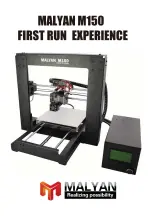
Special Paper
4-9
Postcards
Fan the stack of postcards and align the edges before loading them in the
MP tray. Make sure the postcards you are going to set are not curled.
Feeding curled postcards may cause paper jams.
Some postcards have rough edges on the back (those are created when the
paper is cut). In this case, put the postcards on a flat place and rub the
edges with, for example, a ruler to smooth them.
Figure 4-3
Envelopes
The printer can print on envelopes using paper with a basis weight of 60 to
79 g/m
2
(16 to 21 lb/ream). Envelopes must be manually fed.
An envelope is a more complex object than a single sheet of paper. For this
reason, it may not be possible to obtain consistent printing quality over the
entire envelope surface.
Many envelopes have a diagonal grain orientation. (See
Paper Grain
on
page
4-5
.) This orientation is more likely to wrinkle and crease on its way
through the printer. Before purchasing envelopes for use with the printer,
test a sample to verify the envelope’s suitability.
Do not use envelopes that have an encapsulated liquid adhesive.
Avoid long printing runs consisting of envelopes only. Extensive envelope
printing can cause premature printer wear.
To avoid jamming due to curled envelopes, do not leave more than
approximately 10 printed envelopes stacked in the paper trays during
multiple envelope printing.
Summary of Contents for PP20D
Page 1: ...1 1 1 Oc PP20D Operation Guide Education Services Oc Operation Guide English version...
Page 11: ...1 1 Chapter 1 Basic Operations 11 This chapter explains the following topic Operator Panel...
Page 62: ...List of Fonts 5 5 Font number Font samples 70 71 72 73 74 75 76 77 78 79 80...
Page 63: ...List of Fonts 5 6 Font KPDL Fonts 1...
Page 64: ...List of Fonts 5 7 Font KPDL Fonts 2...
Page 88: ...C 1 Appendix C Printer Specifications C...
Page 91: ...Glossary 1 Glossary Glossary...
Page 95: ...Index 1 Index...
Page 98: ......
















































